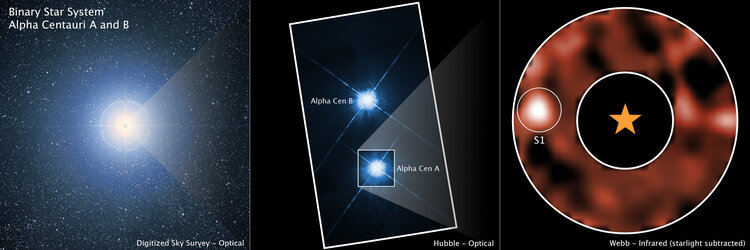

14 Herculis c
This image of 14 Herculis c, a planet orbiting a star 60 light-years away from Earth, was taken with the coronagraph on the NASA/ESA/CSA James Webb Space Telescope’s NIRCam (Near-Infrared Camera). A star symbol marks the location of the host star 14 Herculis, whose light has been blocked by the coronagraph (shown here as a dark circle outlined in white).
Observations from Webb suggest the exoplanet, 14 Herculis c, is as cool as -3 degrees Celsius, marking it as one of the coldest exoplanets ever imaged. Findings also indicate the planet orbits around 2.25 billion kilometres from the host star in a highly elliptical, or football-shaped, orbit, closer in than previous estimates. The planet was not as bright as researchers expected based on its known age (around 4 billion years old) or mass (about 7 times the planet Jupiter). This leads researchers to believe there are complex atmospheric dynamics at play where molecules made at warmer temperatures in the lower atmosphere are brought to the cold, upper atmosphere very quickly.
Light at 4.44 microns was assigned to the color red in this image.
[Image description: This image shows the exoplanet 14 Herculis c. The view is mostly black, with very faint red splotches in the central region of the image. At the center of the image, there is a black circle, and in the center of that, there is a star symbol representing a real star. This black circle blocks the light from the host star. To the lower right of the circle is a fuzzy bright orange circle, which is the exoplanet.]





